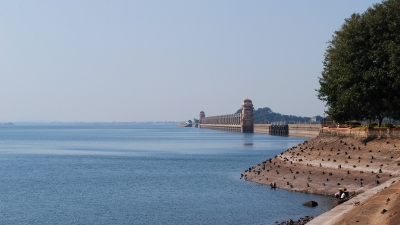
One of the oldest Dams built in India post-independence, Tungabhadra Dam is also known as Pampa Sagar. Tungabhadra Dam is built across the Tungabhadra River, a tributary of River Krishna. The Dam lies in Hospet in the Ballari district of Karnataka and has a whopping capacity of 135,000 million cubic feet.
The river Tungabhadra is a wonder in itself. If you are a religious person, you will especially love to know that Tungabhadra River is considered sacred in Karnataka and Andhra Pradesh. This river was mentioned in the epic Ramayana by the name Pampa River. Humans are always attracted to witness the unseen or rarely seen. These birds are rare as you cannot find them around normal villages and water bodies. You can spot flamingos, storks, greater spot-billed pelicans. Over the years after the construction of the Dam, these birds have made the Dam their habitat. The river is rich with various species of fish and other aquatic animals. Tourists visit this reservoir in order to spot these rare birds and enjoy fishing with family and friends. Tungabhadra Dam has become a popular picnic spot in the area over these decades.
In the beginning of winter, a huge congregation of birds is seen along the vast mud-banks that span hundreds of kilometres. Small islands and mudflats provide shelter to migratory birds. About 200 species of birds have been recorded in and around TB Dam reservoir, and more than 20,000 migratory birds are found in winter in the reservoir.
As far as conservation statuses are concerned, the TB Dam area is host to birds classified as ‘Vulnerable’ as well as many listed as ‘Near Threatened’ by the IUCN. Over the period of sixty years of its existence, the backwaters of Tungabhadra Dam have remained a permanent paradise for local and migratory birds. In spite of disturbances such as the movement of cattle, people, vehicles, fishermen etc., the breeding of birds has sustained, and their populations continue to remain stable, which is heartening, and something beyond our imagination!
Picture Credit : Google

